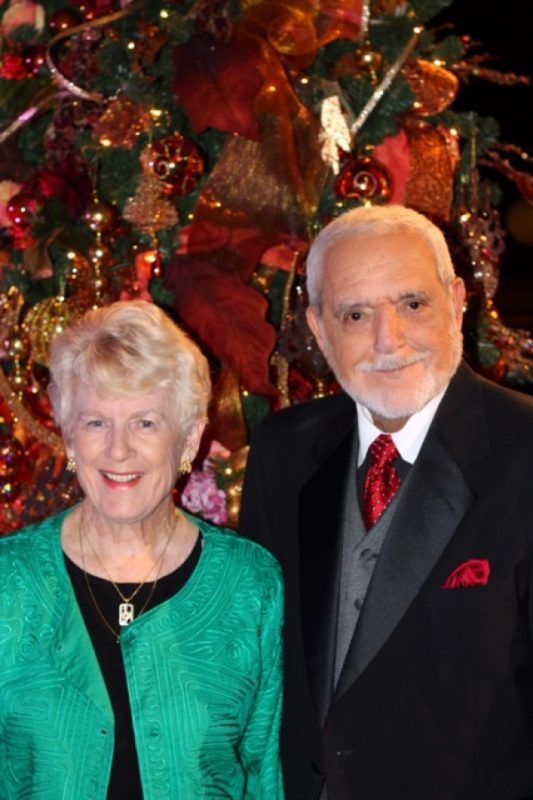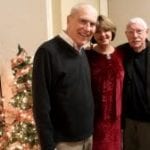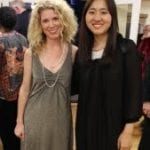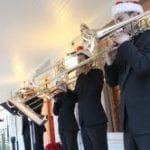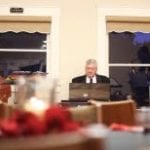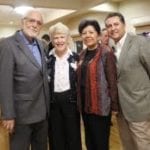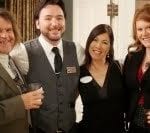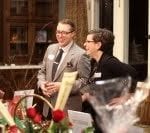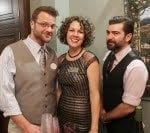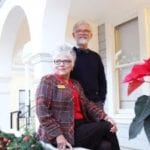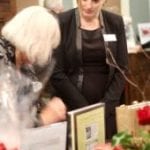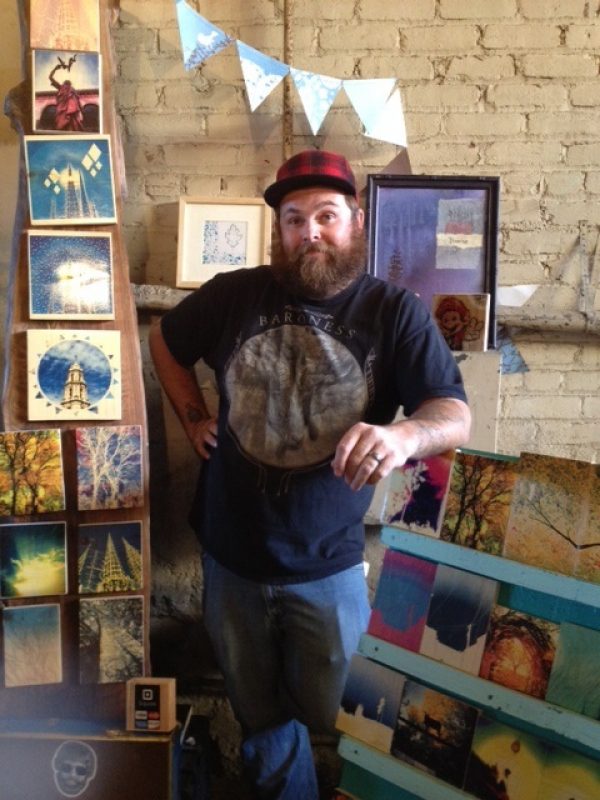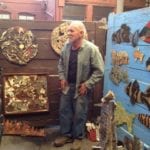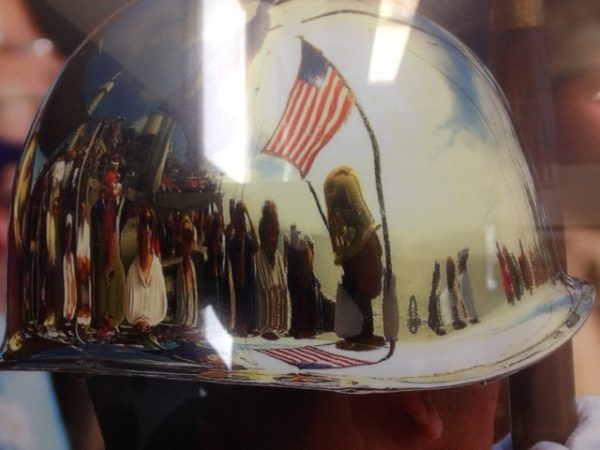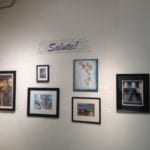The success of a society should not be judged, nor should it depend, solely on how well the cogs in the machine are running but instead on the amount of creativity, ingenuity, and dedication of its citizens. It is through the arts, and literature, that we can gauge how well those cogs are running and what needs to change to make the machine run better, or to abandon the machine altogether and start anew. This is true in every society, and in every city. Yes, even in San Bernardino.
In case you hadn’t noticed, we are in a recession, or at least were in recession. Art would seem superfluous, a luxury almost, in times like these, but when I sat down to speak with Dorothy and Ernest Garcia about the years that they have dedicated to arts and literature in San Bernardino, they encouraged a different perspective.
We talked at length about their background, both of them were teachers, and their classrooms were demonstration classrooms. For those who don’t know, demonstration classrooms or demonstrations schools are classrooms and schools where teachers and administrators from other schools and districts observe amazing teachers, and take back practices to their schools. So the Garcias were doing okay as educators. But not content with being exceptional elementary school teachers who integrated art in their teaching–Ernie explained how he had students become photographers and later dancers, performing the Nutcracker Ballet and how he used this to teach writing and critical thinking– they both went on to earn PhDs. Ernie became dean of the College of Education at Cal State San Bernardino and Dotti became a principal within Colton Unified School District. Still unsatisfied, the couple, in retirement, has continued to change arts and education within the city of San Bernardino and throughout the Inland Empire. If I were to try to list all of their accomplishments and their contributions to the arts community I would go over my 300-word limit more than I already have. This is what you need to know about Dotti and Ernie Garcia: they are champions of the arts; they have made the National Orange Show Art Gallery a reality; the Music in the Schools program in San Bernardino City Schools, a program over twenty years old, and the Guthrie Music Library? Yes, they did that. Did I mention that Ernie is a veteran? Or that Dotti lost her father as a child so her mother traveled in Montana and California teaching at country schools and this is where she spent her formative years? Or that the Garcias raised three children, their house burned down at one point (along with a draft of Ernie’s memoirs, which he has since restarted), and that they recently offered a match of $20,000 out of their own pocket to help keep the San Bernardino Symphony going? Now add to that list the fact that they have been doing this for over forty years, and are now retired. Needless to say, when I entered their home I was humbled and honored, and hopeful that I could someday accomplish a fourth of what they have done and be content that I made a difference.
Of course we spoke at length about their backgrounds, how they met at San Bernardino Valley College, but we also spoke about what is going on in the San Bernardino art community right now and the struggle to make art and music synonymous with San Bernardino and why that is important.
Isabel Quintero: Some people argue that those efforts that are being made to preserve and propagate art, should be made to fight poverty, violence, and the blight of drugs. How does the fight for art qualify itself as equally important as the fight for education and against poverty?
Dorothy Garcia: Because people need more in their lives. People need food and shelter but they also need something beautiful in their lives that gives them something positive to look at, positive to listen to, positive to think about. It has to be part of our culture, if it isn’t part of our culture then we don’t have a soul– [art and music] provides that soul for that culture.
Ernie Garcia: The main source of the things you mentioned, poverty, including housing and food programs, are normally those things that government entities and non-profit organizations do. They provide housing for people; try to organize ways for food to be available for those who need it. The arts in this city are almost entirely voluntary. We go out and we try to get funds if we can for the things that we do. The gallery building at the Orange Show was provided for us by the Board of Directors but the artists involved and the Orange Show staff provided labor. We also went out and talked to people in our community who feel the way that we do and said, ‘We need a thousand dollars from you.’ And they said, ‘Ernie, I can’t give you a thousand dollars right now.” And I said, ‘Okay, give me five.’ So we ended up with almost enough money to make those things [happen]. What I’m saying is that much of this is voluntary, the kind of work that Dotti does in raising money for the Symphony doesn’t come from hidden government agencies or the city. This way of getting folks involved in promoting the arts provides a way of quality of life in a place that seems like it has none, but it has a lot! When you look at the Symphony and you look at Sinfonia Mexicana, the Mariachi Academy, the Symphonie Jeunesse, and Valley Concert Association, which is one of the movers. It comes from a lot of commitment from a lot of people doing it because they want to and they feel it is important. It’s not government at any level. We would love to get $50,000 from the [NEA]…
DG: But it’s tough. We’ve done that at the Symphony.
EG: But it was also from individual people.
DG: It was from individual people. There are very few government grants.
IQ: That’s important though, that there is a group of people in the community that are dedicated because it shows your commitment to your city, and like you said, you need to have something besides having those basic needs met.
EG: Sure. San Bernardino had an opera house before Los Angeles had one. Did you know that?
IQ: I did not know that.
DG: There’s a lovely picture of it some place.
EG: A lot of people in the 1890s— people who knew of San Bernardino, and the railroads that came through here, knew that there was an opera house and the opera performers of the day came to San Bernardino to perform.
IQ: Wow! That’s history that I did not know about San Bernardino.
EG: Let me tell you something about the Valley Concert Association. It used to put on concerts that came from traveling groups from throughout Europe and the United States. In fact one time when I first became involved in the late 80s, we were one of the top five programmers. We had groups from Europe that came to perform at the California Theatre, and it was run through memberships. You would join and you had a part of the whole structure. When Community Concerts folded, we did not have that structure any more and we were running out of money because we did not have those memberships anymore to come and see the Strausberg Chamber Music Group perform. And we were running out of money completely. We had $18,000, and asked, ‘How should we spend it? Let’s put on some concerts for the kids and then dissolve.’ Well, our very good friend, Frank Plash, passed away. I went to his funeral at the Jewish cemetery here in San Bernardino, and there were about twelve people there. And then we received word [that] the Symphony had gotten $1 million dollars and Valley Concert Association had gotten $700,000 from his estate.
IQ: That’s incredible.
EG: Now we weren’t about to suspend the Valley Concert Association, of which I became president. We came upon a new way of sponsoring, promoting, and sustaining the arts. At the time that that happened, Michelle Tacchia, and I served on the board of the chamber music group in Redlands and had put on some great chamber programs at the university. And one day she said, ‘You know, I’d really like to start a children’s orchestra.’ So, I said well, let’s talk about it. Come with me to a meeting of the Valley Concert Association. Let’s ask for $10,000. And she got $6,000 for Symphonie Jeunesse and continued support. So that took off since 2008 and is now a recognized youth string orchestra. Have you ever heard of it? They are a magnificent orchestra. It was sponsored by Valley Concert Association. Then we went on a different path. In order to promote and sustain the arts there are all these groups out here…that need to perform and raise money to sustain themselves, so we spend Valley Concert money in renting venues, paying for security, for lights, for sound, for everything to put on a program, with the responsibility of the performing group to gather an audience and charge whatever they wanted to charge. Chavez Middle School put on a fantastic program of a guitar group and a chorus and they raised $4,000. Others didn’t raise as much…We’ve spread out and have had those groups performing with the idea that we’ll provide all of the setting, you perform and bring the audience and keep all the money.
DG: And there were those Filipino students from Cal State.
EG: They probably raised $6,000. They were a Filipino cultural group from Cal State [San Bernardino]. So that’s where the Valley Concert Association [money] is now, in addition to giving $10,000 per year for Musicians in the Schools, and this year an additional $10,000 to be matched by new money coming into the Symphony, and they’ve already accomplished that. So, our contribution at Valley Concert Association now produces $20,000.
IQ: To the arts.
DG: To the San Bernardino Symphony.
IQ: To the San Bernardino Symphony. I still can’t believe you’re retired. (laughing) It doesn’t sound like retirement.
EG: And every time someone says, “You know I’m gonna retire, I don’t know what to do.” I say, call us!
DG: I’ll give you some ideas! (laughing)
IQ: I’m sure you could give them plenty! In addition to all the work at the Symphony you are also in charge of the Guthrie Music Library. Can you talk a little bit about that for those of us who are not aware of what the Guthrie Library is?
DG: Sure. James K. Guthrie, the founder of the San Bernardino Symphony, amassed an enormous collection of orchestral music in his lifetime, and in retirement, he organized a rental library so that smaller orchestras could rent music at a lower cost than buying it. Shortly before his death in 1995, he donated all the music to the Symphony, feeling that its rental would provide a source of income for the Symphony. It was housed in a series of locations, all donated. Eventually, in 2004, it found a home at the Feldheym Public Library, in downtown San Bernardino. However, during the years of its wandering, it had become disorganized. A group of SB Symphony Guild members took on the task of organizing it and getting it on shelves. I re-catalogued it, and continue to chair the Guthrie Steering committee for the Symphony. Besides myself, there are also several volunteers who spend a morning each week repairing and organizing the 5000 plus pieces of music in preparation for its rental by orchestras all over the country—in fact, all over the world.
IQ: That is an unbelievable amount of work and dedication to music, and your city. We are truly lucky to have people like you preserving the city’s history and culture. It is only fitting that I ask this question then, although it is similar to the one before. The Inland Empire, and San Bernardino in particular is often seen as a violent place with nothing to offer besides desert, drugs, and warehouses. Many consider it void of art, and definitely of a symphony orchestra, what would you say to people with that attitude–that we have nothing to offer here in the Inland Empire?
EG: (laughs)
IQ: Because people prefer to go to L.A. or San Francisco for these types of experiences.
DG: There is so much going on. Both with the recognized organizations, the Symphony and Valley Concert Association, the names that we occasionally see in the paper, but with all the artistic activities that are going on in communities. Music that is being played in communities by groups who just perform for small groups or perform for their family. There’s much more going on than anybody realizes. The difficulty is: how do we get that word out? That’s where we have a problem. I’ll say, well there’s an exhibit at the Orange Show Art Gallery right now and it’s going on until December 14, you should really go see it. And they’ll say, “The NOS Art Gallery? Where is that?”
IQ: I get the same reaction!
DG: It’s only been open two years, so [it’s still new]. The same is true for the Symphony. The Symphony is in its 85th year. Eighty-five years of performing in this city! We have a James Irvine Foundation Grant right now, a community engagement grant and as the people who are coordinating that are going out and talking to groups all over the city, they’re still getting that, “I didn’t know we had a symphony!” And part of it is that people might think that they are not interested in symphony music, so they ignore all that. That’s certainly a possibility. But we simply have to find ways to at least let people know that we have all of this going on.
EG: Let me answer that. When I was still at the university, I always supported the president and the provost when they had the new faculty coming in each year, and we were still hiring quite a few professors then. And they invited the existing faculty, particularly those who were there more than one year. We were at the president’s home one year for such a reception, and as the conversation went on, a person who had been here one year, talking to a new person in the same discipline, and I overheard, “Ugh. What a cultural desert! This is a cultural desert!” So I said, “You know, I don’t find that, but let me ask you because you made a very definitive statement and your experiences certainly support that. What do you know about the San Bernardino Symphony and its history? Have you been there?” “No, no I haven’t been there.” “Have you been to any of the performances by the European groups that come here? Like the New York and San Francisco Ballet who have been here under the hospices of the Valley Concert Association?” “No.” “What do you know about Canto Bello Chorale?” “I don’t know about…” And I went through all the associations and I said, “You know, if I were as ignorant as you I wouldn’t open my mouth. You have no basis in which to make that statement. You have not been to anything according to your testimony right now.” I wouldn’t stand for a statement like that.
IQ: I think that’s a really good answer for people who say that now. They just are not aware. The problem is getting the word out.
EG: And getting the people involved. The folks who were there the other night at the CASA event [held at the National Orange Show Art Gallery], which was a fundraiser for them, were people who hadn’t been there before. And they were out of their minds with the collection. With what the Orange Show has collected since 1949. Some works there I won’t tell you how much they’re worth because you might have some people go get them. (Laughing)
IQ: Well, I am a little short on money.
EG: And the names that are there. They recognized some of the names. They kept saying, “Wow.”
DG: The San Bernardino Symphony has a grant right now, we’ve had Irvine Foundation grants for over six years now, we are on our seventh year, and the first two were for capacity building…the grant right now is community engagement, which is a little different. So we are going out and having these conversations on what music people listen to, what do they want to hear, and so on and so forth. And then the orchestra will do some performances at non-traditional venues. Not at the California Theatre. The first one will be at Cal State [San Bernardino] in March in conjunction with the LEAD Conference and our orchestra will play.
IQ: That’s a really good place for it because many of the families that attend have never experienced it.
DG: Exactly. And it’s broadcast all over the United States.
EG: And in Latin America. Over a million people.
DG: They will be playing one piece for sure that has been played here at the California Theatre, called “Mosaico.” It’s the music of the various areas of Mexico all put together in symphonic form. And then they are going to be doing one at the NOS Art Gallery for the Day of the Dead in November. Again they will be playing pretty much the same music at each venue with activities to go with it for children and families. It must be intergenerational; that’s another criteria for the grant. And then they will be doing one in Fontana in the summer.
EG: And it will all be free.
DG: Yes, it will all be free. The goal of that is to have people from the communities involved, but to also let people know that there’s a symphony in San Bernardino and they can play Hispanic music— what do you know!
IQ: It makes sense, because now you can reach these different audiences that hadn’t considered that in their own city this existed.
IQ: I want to thank you for inviting me into your home and talking with me for over two hours. Please keep up the good fight because we really need people like you, you are an inspiration. When you received your commemoration from Congress it said that you were “recognized as examples of true Americans,” and I agree one hundred percent with that and I think the community agrees as well.

